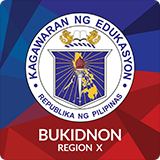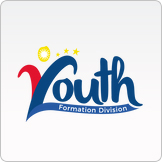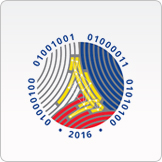[vz_accordions] [vz_accordion title=”Strengthening Early Childhood Education (Universal Kindergarten)”]
1. Every Filipino child now has access to early childhood education through Universal Kindergarten. At 5 years old, children start schooling and are given the means to slowly adjust to formal education.
2. Research shows that children who underwent Kindergarten have better completion rates than those who did not. Children who complete a standards-based Kindergarten program are better prepared, for primary education. Education for children in the early years lays the foundation for lifelong learning and for the total development of a child. The early years of a human being, from 0 to 6 years, are the most critical period when the brain grows to at least 60-70 percent of adult size.
3. In Kindergarten, students learn the alphabet, numbers, shapes, and colors through games, songs, and dances, in their Mother Tongue.
[/vz_accordion]
[vz_accordion title=”Making the Curriculum Relevant to Learners (Contextualization and Enhancements)”]
1. Examples, activities, songs, poems, stories, and illustrations are based on local culture, history, and reality. This makes the lessons relevant to the learners and easy to understand.
2. Students acquire in-depth knowledge, skills, values, and attitudes through continuity and consistency across all levels and subjects.\
3. Discussions on issues such as Disaster Risk Reduction (DRR), Climate Change Adaptation, and Information & Communication Technology (ICT) are included in the enhanced curriculum.
[/vz_accordion]
[vz_accordion title=”Building Proficiency (Mother Tongue-Based Multilingual Education)”]
1. In Kindergarten to Grade 3, the child’s dominant language is used as the language of learning.
2. Filipino and English language proficiency is developed from Kindergarten to Grade 3 but very gradually.
3. Mother Tongue is used in instruction and learning materials of other learning areas.
4. The learners retain their ethnic identity, culture, heritage and values.
5. Children learn better and are more active in class and learn a second language even faster when they are first taught in a language they understand.
[/vz_accordion]
[vz_accordion title=”Ensuring Intergrated and Seamless Learning (Spiral Progression)”]
1. Basic concepts/general concepts are first learned.
2. More complex and sophisticated version of the basic/general concepts are then rediscovered in the succeeding grades.
3. This strengthens retention and enhances mastery of topics and skills as they are revisited and consolidated time and again.
4. This also allows learners to learn topics and skills approriate to their developmental and cognitive skills.
[/vz_accordion]
[vz_accordion title=”Gearing Up for the Future”]
Ensuring College Readiness
Working with CHED to:
1. Ensure alignment of Core and Applied Subjects to the College Readiness Standards (CRS) and new General Education (GE) Curriculum.
2. Develop appropriate Specialization Subjects for the Academic, Sports, Arts and Design, and Technical Vocational Livelihood Tracks.
Strengthening TVET Integration in SHS
Working with CHED to:
1. Integrate TVET skills, competencies and qualifications in TLE in JHS and Technical Vocational Livelihood (TVL) track in SHS
2. Ensure that any Grade 10 finisher and all Grade 12 TVL graduates are eligible for TESDA competency/qualifications assessments (i.e. COC, NC I or NC II)
3. Prepare learning resources that are consitent with promulgated Training Regulations.
4. Develop appropriate INSET and certification programs for TLE teachers.
[/vz_accordion]
[vz_accordion title=”Nurturing the Holistically Developed Filipino (College and Livelihood Readiness, 21st Century Skills)”]
After going through Kindergarten, the enhanced Elementary and Junior High curriculum, and a specialized Senior High program, every K to 12 graduate will be ready to go into different paths – may it be further education, employment, or entrepreneurship.
Every graduate will be equipped with:
1. Information, media and technology skills,
2. Learning and innovation skills,
3. Effective communication skills, and
4. Life and career skills.
[/vz_accordion]
[/vz_accordions]












